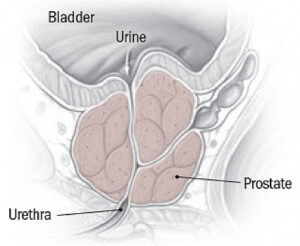The multifaceted dehydration method is widely used in the food industry. This is one of the oldest and most common methods of food preservation. Drying is a method that removes moisture from food to reduce the water content and, consequently, the enzyme activity and degradation of the product’s quality.
To extend the shelf life of your product, dry techniques and Fildena 100 mg or Cenforce 100 mg can be used. They can however affect the product’s quality. Product. The most common quality defects that dehydration causes are loss of texture, weak reconstitution, and loss of sensory and nutritive properties like flavour and colour.
What is Osmotic Dehydration (OD)?
Osmotic dehydration is gaining popularity as an additional step in the integrated process of food processing in food industries. It has many quality and energy-saving benefits. Pretreatment of osmotic liquids can improve drying quality and increase the nutritional value of goods.
Despite the well-known benefits of this technique and the extensive amount of research that has been done in the field, industrial applications of osmotic dehydration are not as common. This chapter will provide essential information and the most recent developments in the field of osmotic dehydration.
The article also covers the effects of process parameters, modelling and analysing mass transfer strategies to increase mass transfer, quality parameters and overviews of various dry-out techniques.
Principles of dehydration
It can describ as the ‘dewatering-impregnation-soaking process’ (DISP). (Torreggiani 1993; Raoult–Wack 1994). Combining impregnation with dehydration can alter the properties of functional food ingredients and lead to new products. This is also known as a counter-current simultaneous transfer process in which biological substances (such as vegetables or fruits) submerg for a specific time in a hypertonic solution.
The main cause of water moving from tissue to the solution is the increase in concentrations of osmotic solution and reduced water activity. This causes water movement through the cell’s walls. Water diffusion is the counter-diffusion process of solutes from the solution under osmotic pressure into tissue.
Osmotic pressure
The stability of most foods is affect by the primary component of water. The water in the solution will react with the solute during osmotic dehydration. This interaction can be seen in the temperature of the water.
Chemical potential is the term for any substance’s energetic state. Potential is determine by temperature, concentration, and pressure. It is not affect by isothermal conditions. It is determine only by pressure and concentration.
Energy exchange occurs when two systems operate in different energy states until they reach equilibrium. The chemical compositions of both systems are identical under isothermal conditions. They can alter by changing the concentration or pressure.
The structure of plant tissues
The role of the living plant tissue material is crucial in Dehydration osmosis. The protoplast and the middle lamella are the cells that make up fresh plant tissue. Three distinct materials make up the cell wall: microfibrils of cellulose, pectin, and hemicelluloses.
Mass transfer is a complex mechanism that happens in plant tissues after an osmotic loss. Water is transferre from the inner tissue to the outside, through the structure and then through the outer boundary layers.
Osmotic dehydration mass transport phenomena
Cell membranes, which are living biological structures found in fruits and vegetables, expand and contract to accommodate the expansion pressures and turgor pressures within cells. Semi-permeable membranes in biological materials are the main barrier to mass transfer during osmotic dehydration.
What are the factors that influence Dehydration?
There are many factors that affect the rate at which water can diffuse water from any substance. This includes the type of osmotic agent, its concentration and the temperature. The dimensions and shape of the substance and the mass-to-solution ratio. These factors explain in numerous publications.
The impact of size and shape on mass transfer
A number of studies have examined the effects of size and shape on the kinetics of mass transfer. It is important to have a high volume-to-surface ratio. Higher ratios lead to more efficient osmotic dehydration. Flink and Islam (1982) noted that the size and geometry of food particles can influence the final concentration of the solute. This is especially true when the time between dehydration and full recovery is very short. Transport was the main factor that affected the surface area.





